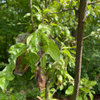Latest hair-brained idea
Michael
9 years ago
Related Stories

SELLING YOUR HOUSEHome Staging to Sell: The Latest Techniques That Really Work
Get up to speed on the best ways to appeal to potential buyers through accessories, furniture, colors and more
Full Story
BATHROOM DESIGNSweet Retreats: The Latest Looks for the Bath
You asked for it; you got it: Here’s how designers are incorporating the latest looks into smaller master-bath designs
Full Story
KITCHEN DESIGNHouzz Call: Pros, Show Us Your Latest Kitchen!
Tiny, spacious, modern, vintage ... whatever kitchen designs you've worked on lately, we'd like to see
Full Story
ARCHITECTURERegional Style: The Jersey Shore
Beyond reality TV and big hair, the Jersey shore is a happening hotbed of colorful seaside design
Full Story
FURNITURESmart Shopper: How to Buy a Mattress
Confusing options, hair-raising prices, haggling ... Our guide can keep you from losing sleep over mattress shopping
Full Story
KITCHEN DESIGNStandouts From the 2014 Kitchen & Bath Industry Show
Check out the latest and greatest in sinks, ovens, countertop materials and more
Full Story
DESIGNER SHOWCASESSee the Daring Designs at the 2013 Kip's Bay Decorator Show House
New York designers show their latest creations in a fashion show for the home
Full Story
MOST POPULARHow Bluetooth 4.0 Will Change Remote Control
Manage lights, TV, refrigerators and more through your phone or tablet when the latest wireless technology rolls into all your home devices
Full Story
BATHROOM DESIGN8 Stunning and Soothing Shower Designs
Step into these brave bathroom designs, from Roman inspired to supermodern, and let the ideas wash over you
Full Story
EVENTSReport From Italy: Mustard Yellow, Hidden Kitchens and More
See what our team in Italy discovered at Salone del Mobile 2016. Which new design idea speaks to you?
Full Story





ken_adrian Adrian MI cold Z5
cousinfloyd
Related Discussions
suggestions needed for hair-brained idea...please
Q
Cecile Brunner, Cl. - which spot would you choose?
Q
Brain teaser Game...continues here...part THREE
Q
OT Dorothy...Brain teaser 2
Q
drew51 SE MI Z5b/6a
MichaelOriginal Author
cousinfloyd
alan haigh
MichaelOriginal Author
alan haigh
jagchaser
kokopelli5a
MichaelOriginal Author
clarkinks
clarkinks
MichaelOriginal Author
alan haigh
MichaelOriginal Author
alan haigh
appleseed70
clarkinks
alan haigh
clarkinks
kudzu9
MichaelOriginal Author
appleseed70
alan haigh